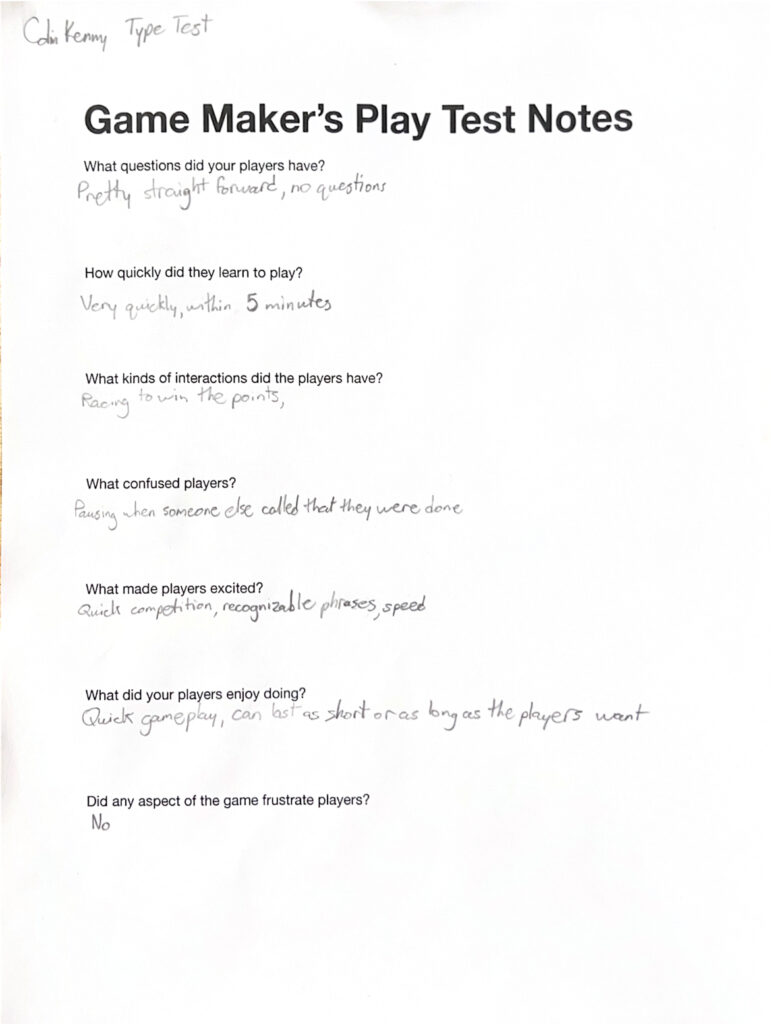What was the most frustrating moment or aspect of what you just played?
I wasn’t really frustrated by anything in the game, for e it ran smoothly and was very fun.
What was your favorite moment or aspect of what you just played?
i loved to spin the spinner and the beautiful art was nice to look at.
Was there anything you wanted to do that you couldn’t?
their isn’t anything that i feel i wanted to do different or wanted to do that i couldn’t.
If you had a magic wand to wave, and you could change, add, or remove anything from the experience, what would it be?
i don’t think their is anything that needs added, a fun thing could be somethings that can make you skip a turn meaning your not able to pick any cards or move at all.
What should be improved with the next version?
maybe more events, not cards just more different occurrences.
Describe the game in 3 words?
cute, grim, demure.
colins texting game review
What was the most frustrating moment or aspect of what you just played?
i wasn’t frustrated, only by typing slowly lol.
What was your favorite moment or aspect of what you just played?
being able to use my phone so i was at least a little familiar with my keyboard layout.
Was there anything you wanted to do that you couldn’t?
no their wasn’t all the rules and safeguards were perfect.
If you had a magic wand to wave, and you could change, add, or remove anything from the experience, what would it be?
i wouldn’t want to change anything.
What should be improved with the next version?
nothing
Describe the game in 3 words?
silly, quick, fun.

